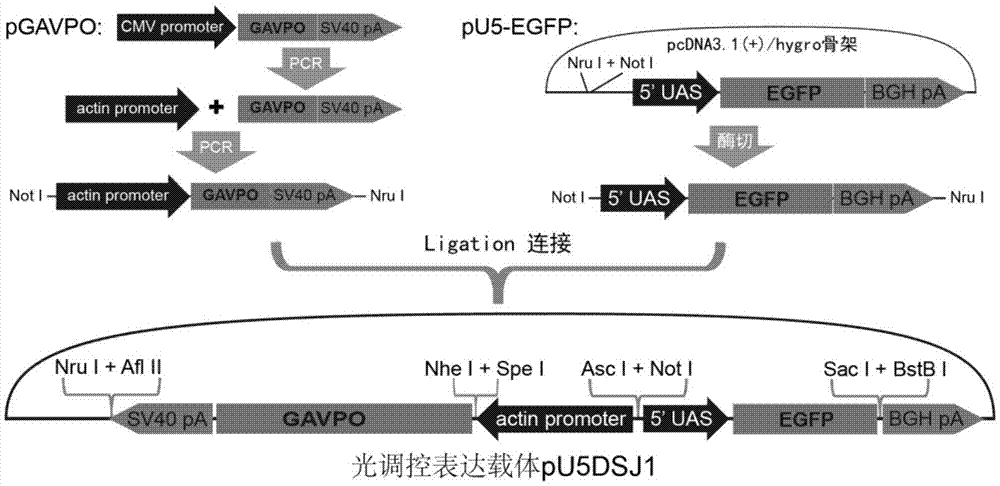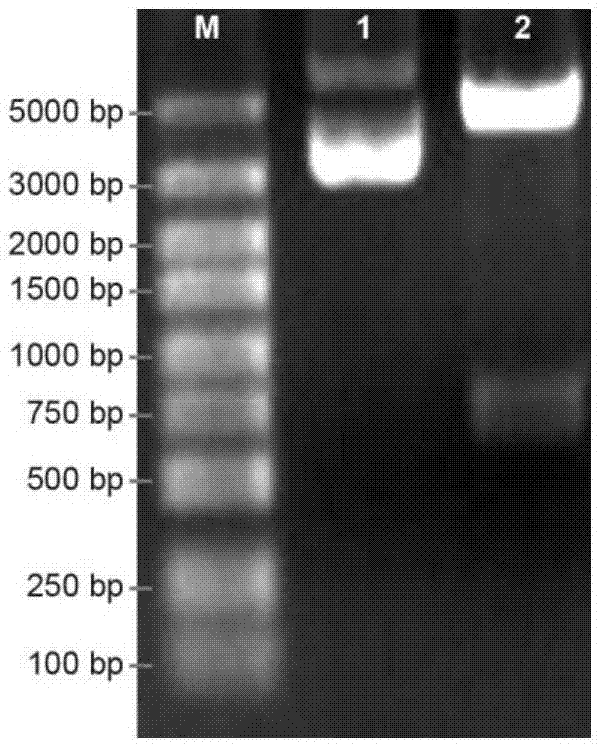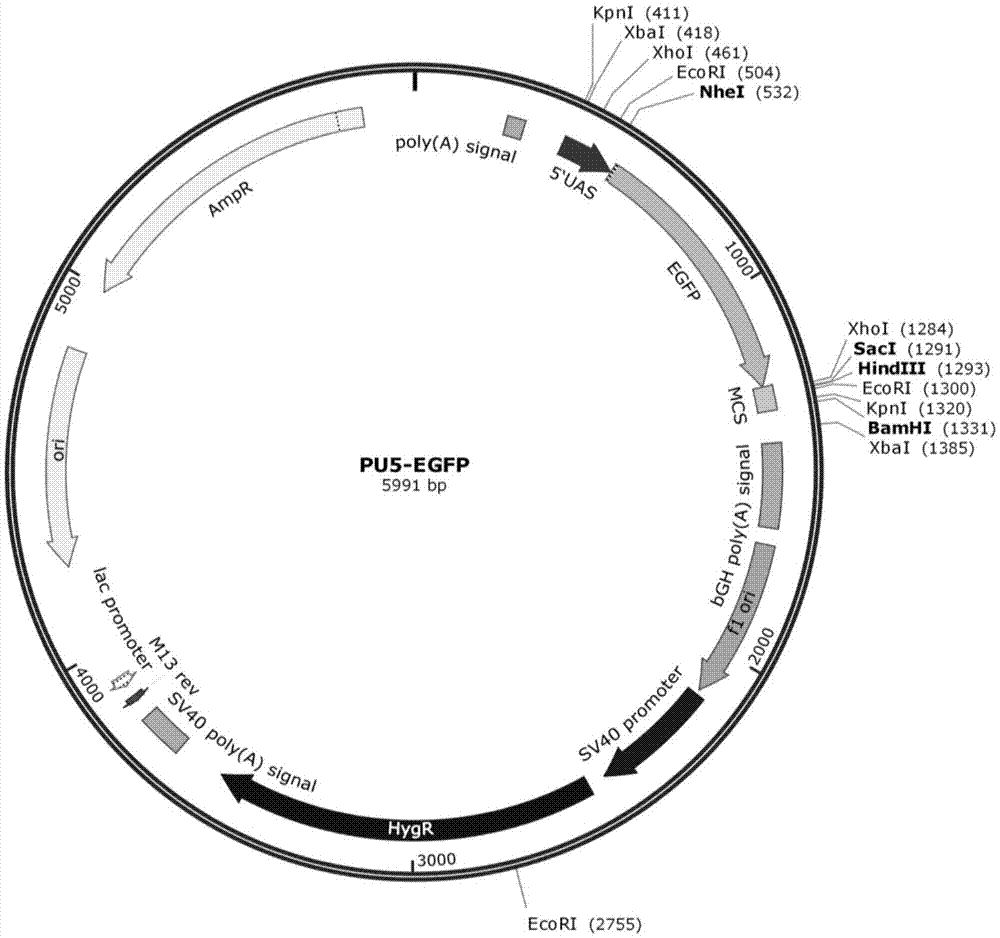Light regulated gene expression vector for dunaliella salina and preparation method and application thereof
A technology of gene expression and light regulation, which is applied in the field of light regulation gene expression vectors of Salina salina, can solve the problems of high expression regulation and low expression efficiency of exogenous genes, and achieves high expression efficiency, fast expression, high efficiency and stability, and easy control. Effect
- Summary
- Abstract
- Description
- Claims
- Application Information
AI Technical Summary
Problems solved by technology
Method used
Image
Examples
Embodiment 2
[0059] Construction of embodiment 2 intermediate carrier pU5-EGFP
[0060] The pEGFP-C1 and pU5-Cre vectors were digested with NheI and BamHI, respectively, and the EGFP gene DNA fragment and the linear pU5-Cre vector fragment were recovered and purified. The linear vector and the EGFP gene fragment were ligated at a ratio of 1:5 with a ligation reagent at 16°C, transformed, cultured, picked a single colony to expand culture, and extracted a plasmid according to the method in Example 1. The recombinant plasmid was identified by double digestion with NheI and BamHI (to obtain a linear vector and an EGFP fragment of about 800bp), and the result of the digestion was electrophoresed on a 1% agarose gel (such as Figure 4 shown). The correctly identified recombinant plasmids were then sequenced to confirm the correctness of the EGFP gene sequence. The recombinant plasmid vector pU5-EGFP ( image 3 ).
Embodiment 3
[0061] Example 3 Construction of eukaryotic expression vector pU5DSJ1
[0062] The cloning vector in Example 1 and the pU5-EGFP vector constructed in Example 2 were double-digested with NotI and NruI respectively, and the light-sensitive transcription factor GAVPO expression cassette and linear pU5-EGFP vector, linear vector and gene fragment were recovered and purified after digestion Ligate at 16°C with the ligation reagent at a ratio of 1:5, transform, culture, pick a single colony to expand culture, and extract the plasmid according to the method in Example 1. Recombinant plasmids were identified by NotI+SacI double digestion or HindIII single digestion, and the digestion results were electrophoresed on 1% agarose gel (such as Figure 6 shown). The correctly identified recombinant plasmids will be sequenced again to confirm the correctness of the linked gene sequences. The recombinant expression vector pU5DSJ1 ( Figure 5 ).
Embodiment 4
[0063] Embodiment 4 glass bead method transforms salina
[0064] The eukaryotic expression vector pU5DSJ1 plasmid successfully constructed in Example 3 was extracted with an endotoxin-free plasmid extraction kit, and the plasmid was introduced into Salina cells by glass bead method for expression verification. The specific operation method is as follows:
[0065] Salina cells were counted when they reached the logarithmic growth phase (the concentration was 10 6 cells / ml), take 800 μl of salina algae liquid, centrifuge at 500 rpm for 2 minutes, discard the supernatant, gently mix the salina cells with 1 ml of fresh salina liquid medium, and then centrifuge, repeat three times. Salina cells were resuspended in 800 μl liquid medium to a final concentration of 10 5 cells / ml. Add 150 μl PEG6000 to make the final concentration 3.5-5%, mix gently and add 90 μl plasmid DNA (0.55 μg / μl)), then add 300 μg high temperature and high pressure sterilized glass beads (pre-acid-treated, di...
PUM
 Login to View More
Login to View More Abstract
Description
Claims
Application Information
 Login to View More
Login to View More - R&D
- Intellectual Property
- Life Sciences
- Materials
- Tech Scout
- Unparalleled Data Quality
- Higher Quality Content
- 60% Fewer Hallucinations
Browse by: Latest US Patents, China's latest patents, Technical Efficacy Thesaurus, Application Domain, Technology Topic, Popular Technical Reports.
© 2025 PatSnap. All rights reserved.Legal|Privacy policy|Modern Slavery Act Transparency Statement|Sitemap|About US| Contact US: help@patsnap.com



